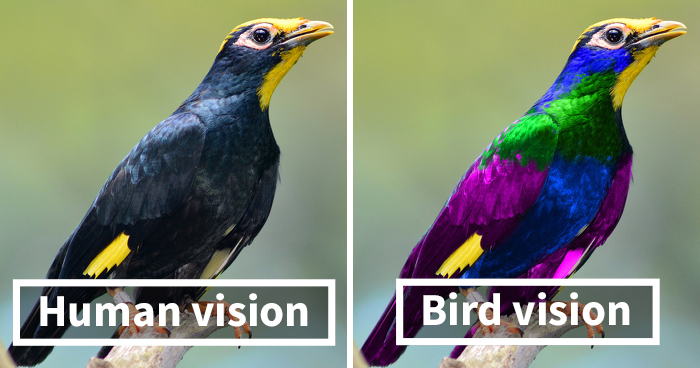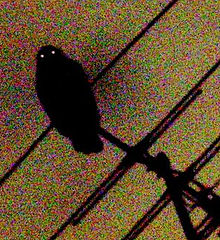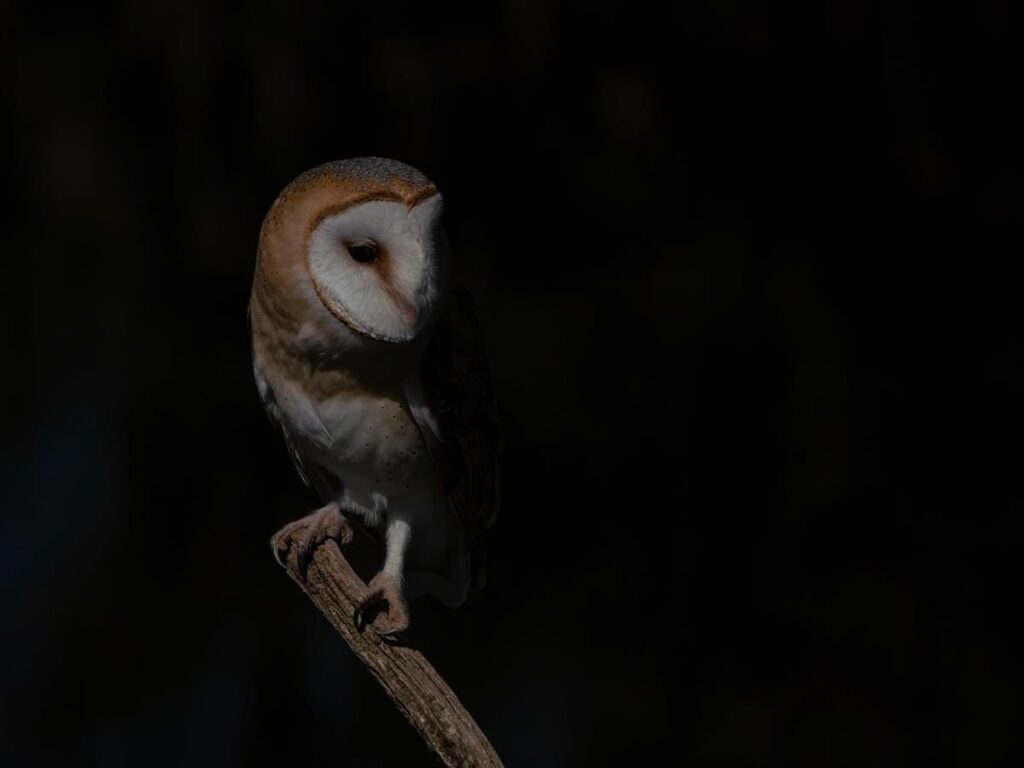Cockatoos have limited night vision and cannot see well in the dark. They rely on daylight to navigate and find food.
Welcome to the fascinating world of cockatoos, vibrant and intelligent birds that captivate bird enthusiasts around the globe. These feathered creatures are a part of the parrot family and are known for their striking plumage and remarkable ability to mimic sounds.
Cockatoos thrive in various environments, mainly in the woodlands and forests of Australia and Indonesia. Understanding their capabilities and behaviors, including their vision, is essential for proper care and conservation. While their daytime vision is excellent, aiding them in foraging and social interaction, their nighttime vision is not as acute. Thus, cockatoos, like most parrots, are considered diurnal, being most active during the day and resting at night.
Cockatoos: Masters Of The Sky
High above in the endless blue, the cockatoo dances on the winds with grace. These parrots charm us with their intelligence, playful antics, and striking feathers. By day, they are a marvel in the skies. But what about when the sun sets? Do these capable creatures continue their mastery into the night?
Nighttime Behavior
Cockatoos, much like many of us, prefer a good night’s sleep. When darkness enfolds the sky, these birds find a cozy perch. They nestle among the trees to rest. Their nighttime routine is not for flying; it’s for recharging after a busy day. Let’s explore how they cope when the lights go out!
Adaptations For Twilight
Cockatoos don’t have the same nighttime prowess as nocturnal birds. But they do have tricks for the twilight! With their large eyes, they make the most of the available light. When dusk sets in, cockatoos adjust their activities. As the shadows grow longer, they might enjoy a last-minute forage or a final squawk with friends before nighttime silence prevails.
- Twilight Foraging: They use the dim light to find their favorite snacks.
- Dusk Communication: A time for social birds to touch base with their flock.
- Roosting: Settling down for the night in the safety of the trees.
Cockatoos rely on their keen vision at dusk. But when night arrives, they prefer not to fly. Predators lurk in the darkness, and the risk of injury is too great. Cockatoos choose safety, waiting for morning’s first light to resume their reign over the sky.
Debunking Myths: Avian Night Vision
In the avian world, night vision capabilities spark numerous myths. Some believe that all birds, including cockatoos, navigate pitch-black environments with ease. Understanding how birds see after sundown reveals surprising truths. Let’s explore what science says about cockatoos’ nocturnal vision.
Common Beliefs Vs. Science
Myths suggest that cockatoos have excellent night vision. Yet, scientific studies show a different story. These birds, like many others, rely on light to see. Their eyes lack the specialization that creatures of the night possess. To bust common misconceptions, we look at the anatomy and behavior of these feathered friends.
- Cockatoos need light to navigate.
- Their retinas do not have many rod cells.
- Rod cells are essential for seeing in low light.
Comparative Sight In Birds
Not all birds are the same. Nocturnal birds like owls have a high number of rod cells. This allows them to hunt in the dark. Comparatively, cockatoos and other parrots possess more cone cells. These cells are great for color vision during the day. Let’s review their visual capacities in a table:
| Bird Type | Rod Cells (Night Vision) | Cone Cells (Day Vision) |
|---|---|---|
| Cockatoos | Low | High |
| Owls | High | Low |
The table confirms that cockatoos are not adapted for the night. Their visuals shine in the sunlight. Therefore, saying cockatoos can see in the dark is a myth debunked by science.
The Anatomy Of A Cockatoo’s Eye
Exploring the mysteries of cockatoo vision sheds light on how these birds navigate the twilight. Their eyes are evolutionary marvels, fine-tuned for survival. Let’s delve into the details of their visual capabilities, starting with the eye’s structure and how it functions.
Structure And Function
Cockatoos have sophisticated eyes that contribute to their overall sensory system. Here is a glimpse into their ocular structure:
- Cornea: The clear front layer that helps focus light.
- Iris: This controls how much light enters the eye.
- Pupil: It dilates and constricts, adjusting to light levels.
- Lens: Behind the iris, focuses light onto the retina.
- Retina: Contains photoreceptor cells like rods and cones.
The retina plays a vital role. Cones detect color during the day. Rods are more light-sensitive and crucial at night.
Adaptations For Dim Light
While cockatoos aren’t nocturnal, their eyes have adaptations for low light:
- Tapetum Lucidum: This reflective layer isn’t present in cockatoos but they compensate with other features.
- High Rod Density: Rods outnumber cones, aiding dim light perception.
- Large Pupils: They can expand, allowing more light to enter.
Cockatoos rely on available light, such as the moon or artificial sources, to see in the dark. Though not perfect, their night vision supports their needs.
Photoreceptors: Cones And Rods
In the fascinating world of avian eyesight, cockatoos and other birds rely on photoreceptors to navigate through varying degrees of light. These photoreceptors come in two types, cones and rods. Cones are responsible for color vision and work best in bright light, while rods are crucial for seeing in low-light conditions.
Balance Between Color And Light Sensitivity
For birds like cockatoos, there is a delicate balance between their color perception and sensitivity to light. Their retinas are equipped with both types of photoreceptors, which allow them to see a spectrum of colors during the day and navigate the darkness at twilight.
Rods: The Key To Night Vision
Rods dominate within a cockatoo’s retinal structure when it comes to nocturnal activities. These photoreceptors become essential for their survival as they improve the birds’ ability to see at night. While cockatoos are not true night-time creatures, their rods provide them with sufficient night vision to find roosts or evade predators in the dusk.
- Rods operate in low light conditions.
- They are more sensitive to light than cones.
- Cockatoos can perform basic navigation at night.
Exploring Nocturnal And Diurnal Species
Understanding how different birds behave at night offers insights into their unique adaptations. Some species are active in the darkness, while others thrive in daylight. Cockatoos, known for their bright plumage and intelligence, belong to the latter category. Let’s dive into the world of these fascinating creatures and compare their activity patterns to nocturnal birds.
Cockatoos Amidst Nocturnal Birds
Cockatoos are diurnal, meaning they are awake during the day. Unlike true nocturnal birds, cockatoos need sunlight to see and perform their daily activities. This characteristic shapes their behavior and interactions with the environment.
Activity Patterns Of Different Avian Species
Birds display a range of activity patterns. These patterns are vital for their survival. Here’s a comparison:
| Type | Activity Time | Examples |
|---|---|---|
| Diurnal | Day | Cockatoos, Eagles |
| Nocturnal | Night | Owls, Nightjars |
| Crepuscular | Dawn and Dusk | Nighthawks, Some Pigeons |
Environmental Factors Affecting Vision
Nature gifts birds like cockatoos with remarkable vision. Yet, surroundings play a huge role in how well these birds see. Let’s dive into the environmental factors that influence cockatoo sight, both at night and during the day.
Light Pollution’s Impact
Light pollution transforms night into day for city-dwelling cockatoos. These conditions may seem beneficial but can disrupt natural behaviors in cockatoos. Below are key effects:
- Navigational difficulties due to altered night skies.
- Feeding patterns shift, impacting diet and health.
- Sleep disruption leading to stress or aggression.
Cockatoos may struggle to adapt as their night vision isn’t designed for bright conditions.
Natural Habitats: Dark Skies
In contrast, cockatoos in the wild experience the clarity of a dark night sky. Here’s what they gain:
- Better orientation under starlight.
- Efficient foraging without artificial light.
- Undisturbed sleep cycles, crucial for health.
True darkness in their habitat helps these birds maintain a balanced life cycle.
Behavioral Insights: Cockatoos After Dusk
Behavioral Insights: Cockatoos After Dusk shines light on some fascinating aspects of these charismatic birds. Cockatoos, known for their intelligent and social nature, display unique behaviors once the sun sets. But can they see in the dark, and how does this affect their lifestyle? Let’s explore how these birds adapt to the nighttime environment.
Foraging And Nesting At Night
Cockatoos boast remarkable adaptability when it comes to their survival tactics post-sundown. While they are mainly diurnal, preferring daylight for their activities, certain species have been observed foraging at twilight or using moonlight to assist in their search for food. This twilight activity often involves seeking seeds or nuts which are easier to find at night.
As for nesting, these birds show a preference for darkness to help conceal their activity from potential predators. Their nests, typically located in tree hollows, offer an additional layer of protection.
Communication In Low Light Conditions
In the dim hours, cockatoos don’t quiet down. Communication remains critical for flock cohesion and alerting others of threats. Cockatoos utilize a series of vocalizations that pierce through the darkness, ensuring they stay connected with their group.
Their calls, often clear and distinct, serve as a means for maintaining contact. These vocal behaviors suggest that sound is just as important, if not more so, than sight in their nighttime interaction.

Credit: www.boredpanda.com
Scientific Studies On Avian Night Vision
Do cockatoos have the power to see in the pitch-dark night skies? Scientists have been exploring the depths of avian night vision for years. Understanding how birds like cockatoos navigate the dark sheds light on their survival skills. Recent scientific studies provide fascinating insights.
Research Methodologies
Experts use innovative methods to study cockatoos’ night vision. These range from laboratory tests to field observations. Specific techniques include:
- Visual performance testing in controlled environments.
- Tracking eye movement patterns after dusk.
- Analyzing retinal structures for adaptations.
Such methodologies help researchers gather data. Data show how well cockatoos see after dark. Research combines biology with technology. This gives new insights.
Findings On Cockatoos
The findings on cockatoos reveal intriguing aspects of their vision. Some key points include:
| Aspect | Details |
|---|---|
| Low-light Vision | Cockatoos can see in lower light than previously thought. |
| Retinal Adaptations | Their retinas have special cells that help them see at night. |
| Navigational Skills | Cockatoos use stars and the moon to navigate in the dark. |
Important results highlight the cockatoos’ adaptability and survival strategies. These birds have more to their vision than meets the eye.
Implications For Cockatoo Conservation
Cockatoos, the vibrant and intelligent birds of the parrot family, thrive in a variety of habitats. Their ability to see in the dark has direct consequences for their survival. At dusk, cockatoos rely on their vision to find food, shelter, and avoid predators.
Protecting Dark Habitats
Cockatoos need dark, natural environments for their nocturnal activities. Conserving these areas is crucial. Light pollution from cities and towns interrupts cockatoos’ circadian rhythms. It can also affect their breeding and feeding patterns. To protect these birds, we must reduce artificial light in key habitats:
- Implementing shielded lighting in areas close to cockatoo habitats
- Maintaining natural vegetation that provides cover and foraging opportunities
- Enforcing light curfews in sensitive ecological zones
Impact Of Human Activity
Humans affect cockatoos in diverse ways. Deforestation and urban expansion lead to loss of habitats. Light and noise pollution can disrupt their natural behavior. Simple changes in our lifestyle can have a positive impact:
- Building bird-friendly structures that reduce collision risks
- Supporting eco-friendly policies that promote conservation
- Participating in local preservation efforts to safeguard cockatoo populations

Credit: en.wikipedia.org
Technological Advancements And Future Research
The enigmatic vision of cockatoos has long captivated scientists and bird enthusiasts alike. With recent technological strides, the exploration into the nocturnal capabilities of these feathered creatures propels forward. Innovative tools and rigorous studies stand to shed new light on how cockatoos perceive their world after sundown.
Innovative Tools For Studying Vision
Understanding avian nocturnal vision now involves cutting-edge technology. Devices such as high-resolution night vision cameras grant researchers a glimpse into the cockatoos’ world without disturbing their natural behavior. Eye-tracking systems further reveal how these birds navigate the dark, while genetic analysis techniques detect adaptations specific to night vision.
- High-resolution video recording
- Eye movement tracking software
- Genomic sequencing tools
Combined, these tools could revolutionize our understanding of cockatoo vision.
Potential Discoveries In Avian Biology
The deployment of these technologies holds the promise of groundbreaking discoveries. Scientists anticipate unveiling details about cockatoo retinal composition and visual processing in their brains. Such knowledge could lead to insights about avian evolution and their adaptation to diverse environments.
| Research Area | Expected Impact |
|---|---|
| Retinal Structure | Enhanced comprehension of nocturnal vision |
| Neural Pathways | Clues to visual information processing |
| Behavioral Patterns | New strategies for habitat conservation |
Future studies promise to further demystify how cockatoos interact with their environment after dark and support conservation efforts tailored to their nocturnal habits.
Credit: www.quora.com
Conclusion
Cockatoos may not have night-vision superpowers, but they possess a keen sense of sight that guides them at dusk. Their eyes adapt to lower light levels, yet pitch-black conditions are challenging. For optimal health, providing a natural light-dark cycle is essential for these charismatic birds.
Remember, a well-lit habitat during the day leads to a happy, healthy cockatoo.
Ryan Everhart is a passionate bird enthusiast and blogger, primarily writing on his website, Avian Whispers. His journey into the world of bird blogging began with a deep interest in parrots, a species that captivated his attention for their intelligence and social behavior. Over time, his content expanded to cover a broader range of bird species, offering insights into bird behavior, care, habitats, and conservation.
Ryan is dedicated to educating his audience, which includes both new bird owners and seasoned enthusiasts. His writing is filled with personal experiences, expert knowledge, and practical advice on bird care. Through Avian Whispers, he aims to foster a deeper appreciation for birds, emphasizing their role in nature and the joys of having them as pets.
Starting with articles focused on parrots, Ryan’s work now encompasses a diverse range of topics such as feeding, training, habitat enrichment, and bird health. His love for birds extends beyond parrots, diving into various avian species. His informative and heartfelt writing reflects his commitment to the well-being of birds and the desire to help others connect with these creatures.
As a growing voice in the bird blogging community, Ryan strives to provide a platform where bird lovers can learn, share experiences, and connect over a shared passion for avian life. His blogs are not only educational but also serve as a reminder of the importance of protecting and nurturing the bond between humans and birds.




